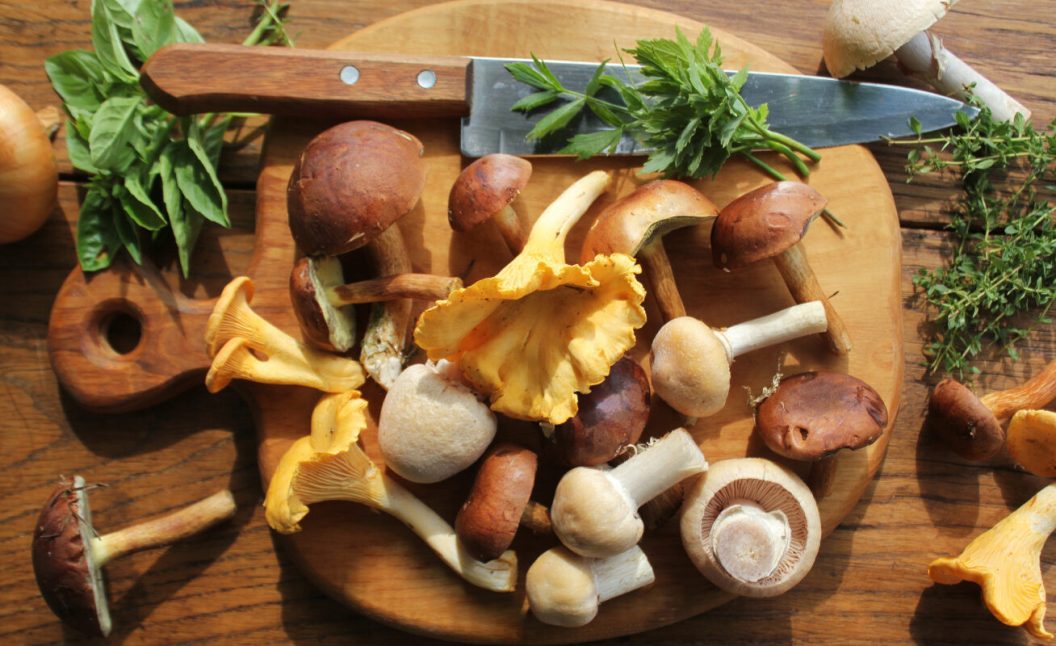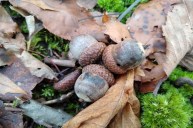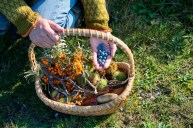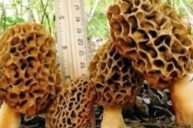There are many types of edible mushrooms in North America that are not only great to eat but also fun to go out and discover. Mushroom hunters everywhere pride themselves on their ability to find these wild edible delights, but in many cases more so how to cook them.
When many of us think about eating from the wild, we think about wild game meat or fresh-caught fish. But just as important is foraging your own fruits vegetables. With their meaty texture and earthy taste, wild mushrooms are a tasty addition to any dish—be it fresh soup or stews, creamy risotto, or just sautéed and salted. And when you skip the grocery store and find them yourself, the common mushroom's flavor seems to go through the roof.
As with any wild foraged edible plants, it must be said that there are many lookalikes to trip you up—and that's especially true with mushrooms that aren't safe to consume. Because of that, we left off the list the fungi with common poisonous mushrooms lookalikes, including button mushrooms and porcini mushrooms. It's crucial to take the time to learn to identify these wild edible mushrooms so you can safely share them with friends and family.
Here are the tastiest and best types of edible mushrooms to get your hands on in the woods.
Chanterelle Mushrooms

Getty Images, Boris Ipatov
One of the most popular and common wild edible mushrooms comes from the chanterelle family, and the best are generally found later in the summer. They have golden yellow caps with a bit of orange in them and have a false gill that is more like ridges. Begin your search for chanterelles along oaks, conifers, and in other mixed forest areas, particularly around wet ground.
While the locations to try are around these trees, chanterelles only grow from the ground. Chanterelles are considered one of the more exotic species of edible wild mushrooms since (at this time) they can only be found in nature and aren't commercially grown.
Puffballs
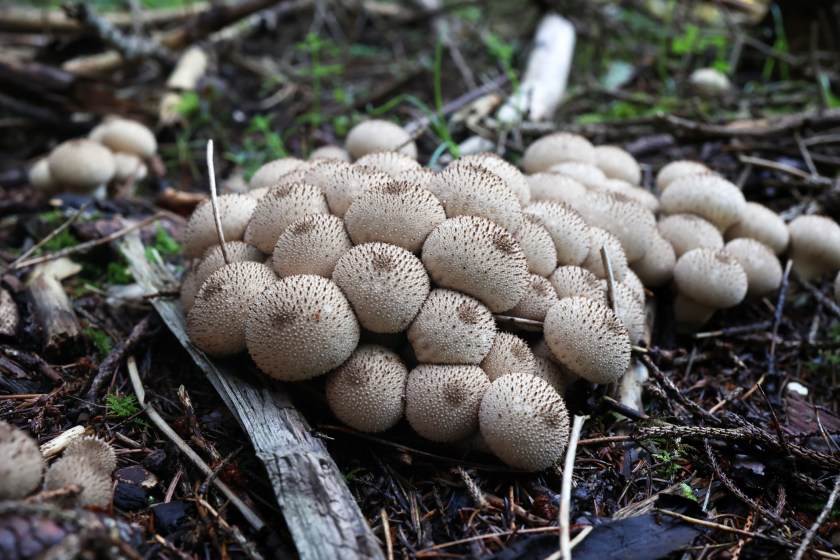
Getty Images, Wirestock
It is said that there are two types of puffballs—little puffballs and giant puffballs. In reality, there is really no difference between the two other than their size. While puffballs aren't as flavorful as chanterelles or other wild mushrooms, they are great in a stir fry, gravy, or just breaded and fried like my mom used to make.
Puffballs are mainly found during the summer or early fall and tend to grow in flatter areas such as meadows, where they prefer decaying material to grow on. There are only a couple of puffball lookalikes to be on the alert for, but one of them—the amanita—is quite toxic.
Chicken of the Woods
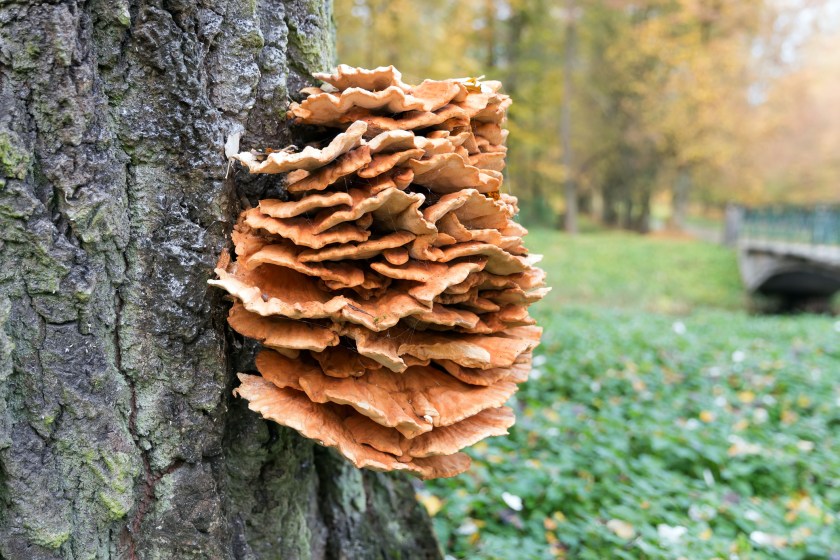
Getty Images, fotyma
From the East Coast to the West Coast, this is one of the most popular of the wild mushroom species for foragers. The North American version of this great edible mushroom includes seven different species that live and grow near the base of trees with a beautiful orange-yellow color that is visible from a distance.
One great thing about Chicken of the Woods is that they're super distinct-looking and they don't have any close lookalikes—so you're safe to pick these crazy guys. Learn more, here.
Hen of the Woods
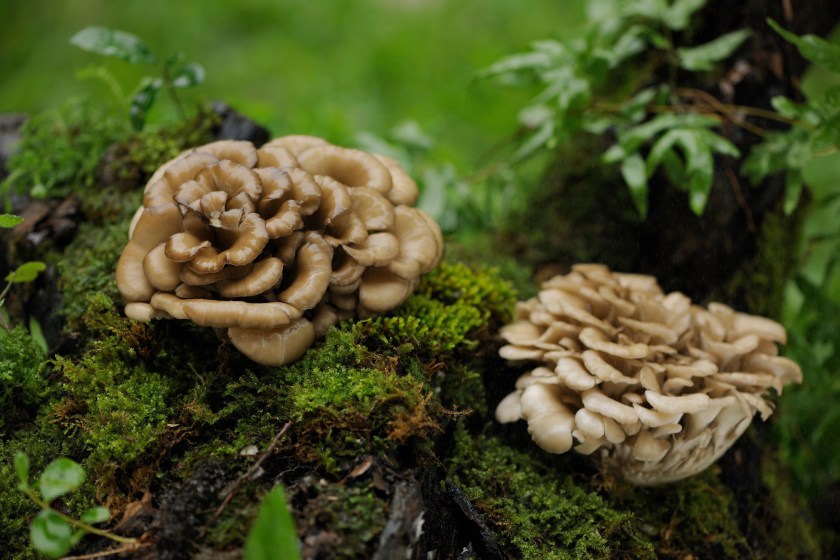
Getty Images, ueapun
Although the name is similar to the last edible mushroom on our list, Hen of the Woods looks nothing like its Chicken cousin. Hen of the Woods is, however, commonly known as maitake mushrooms, and they're very popular in Japanese and other Asian dishes. Miatake mushrooms are fairly common in the Northeast and mainly found at the base of oak trees, but they do live under other trees such as elm and maple.
Often, they appear in the same place from year to year—meaning that a forager with a good memory can mark the spot and return, usually in the fall. They go well in a wild rice salad or just marinated and grilled.
Morel Mushrooms
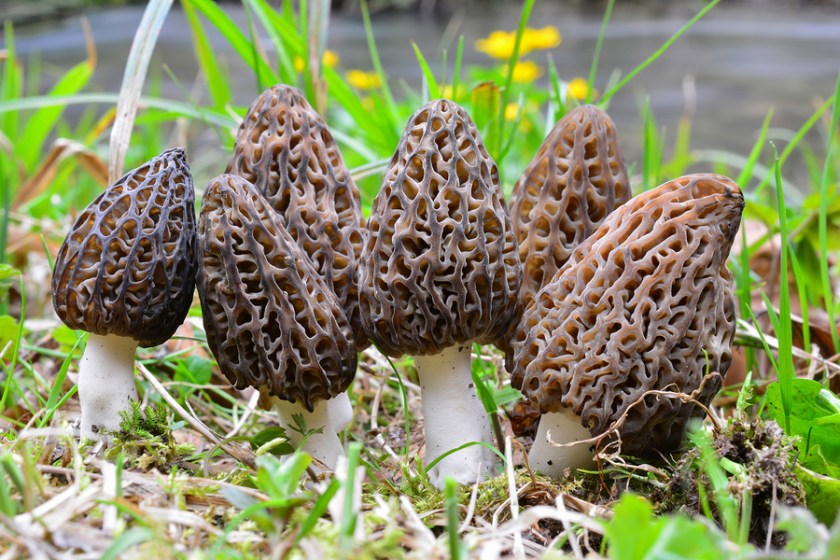
Probably the most popular type of edible mushrooms to forage—and the species that has the most written about it—the morel mushroom is the stuff of legend among mushroom hunters. And for good reason: They are relatively easy to hunt as they grow in a ton of different places—and they're delicious to eat, even just sautéed. That's not surprising considering they're a relative of the highly-prized truffle mushroom.
But did you know that you can also cultivate them yourself?
Sure, it's not easy or very successful. But eating false morels can be quite dangerous—so make sure of what it is before you try. Some mushroom hunters like to try near the base of elm, ash, or even old apple trees, but it takes time and patience to find these favored fungi.
Oyster Mushrooms
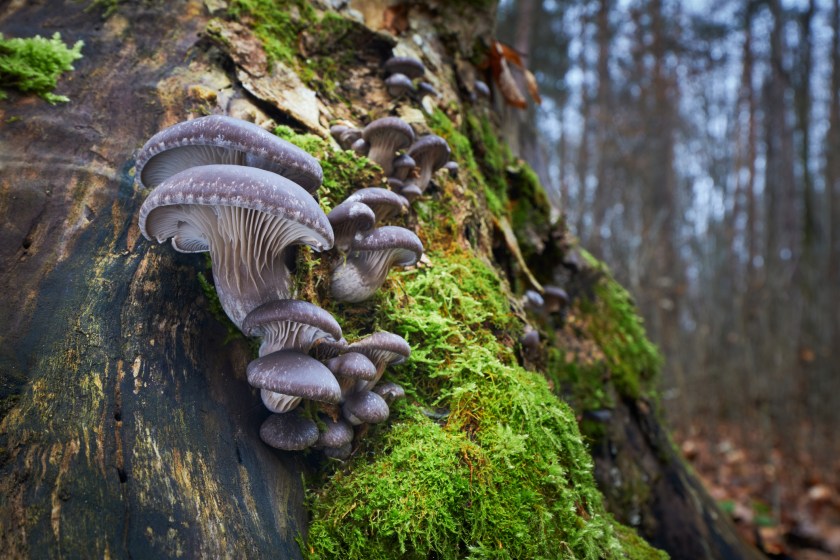
Getty Images, adrianam13
The opposite of the morel, oyster mushrooms are one of the top commercially produced mushrooms and one of the easiest to cultivate. Oyster mushrooms are generally white to light brown with a firm, white flesh and love to feed and grow on dead or decaying trees, particularly hardwoods.
They are mainly late-summer and fall mushrooms that grow in shelf formations along the length of a log or right up the tree trunk.
Turkey Tail Mushrooms
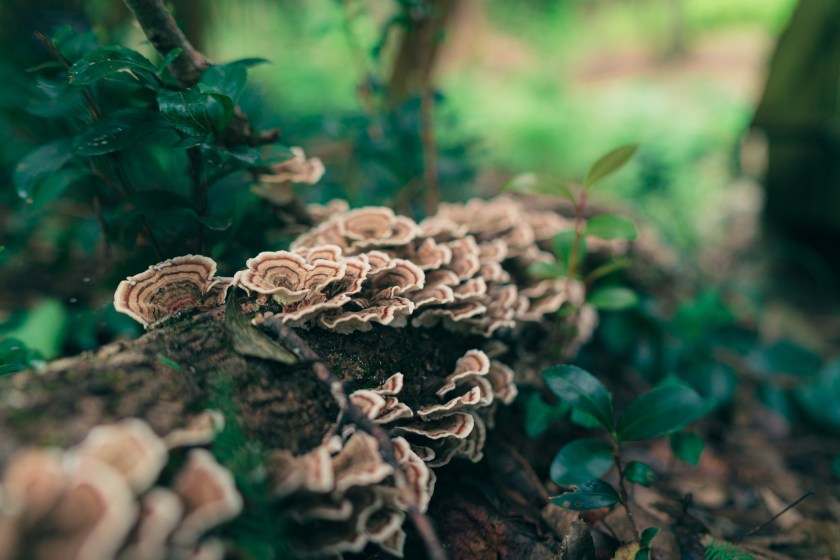
Getty Images, Wirestock
This is one mushroom that is entirely edible, but not so much as a side or main dish. Turkey tail mushrooms are well known around the world for their medicinal properties by reducing inflammation, fighting viral infections, and lessening the side effects of cancer treatment.
Turkey tail is used in tea, pills, and powders as a treatment. When you see them growing on dead hardwood, you almost can't miss them for their bands of brown, tan, and white that resemble a wild turkey's tail feathers.
Turkey tail mushroom's don't have any deadly lookalikes, but there are a few false turkey tail mushrooms out there that won't provide medicinal benefits. Real turkey tails grow abundantly on dead trees and logs and while they range in colors, a true turkey tail always has visible pores on their white underside and its top side has very fine hairs that are velvety to the touch.
Black Trumpet Mushrooms
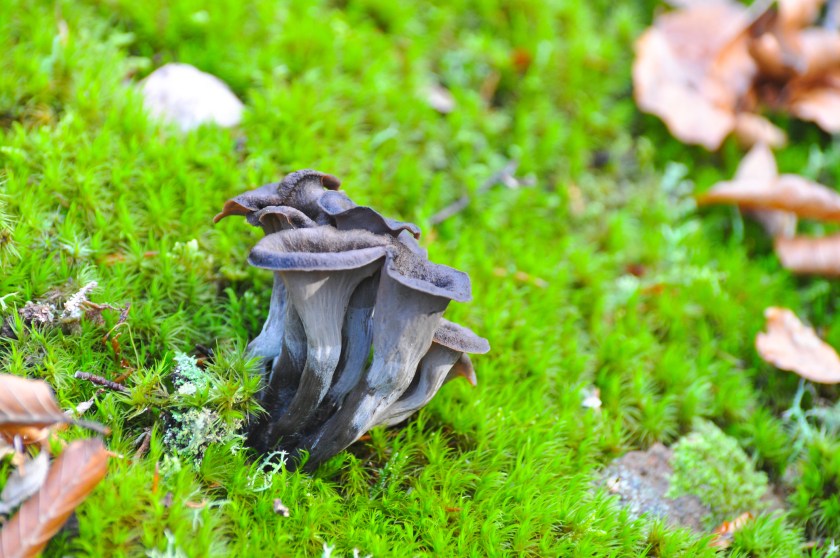
Getty Images, Ivan Marjanovic
As with the turkey tail mushroom and the black trumpet, most sources agree they have no known poisonous mushroom lookalikes. It is said that this makes them a good choice for beginner foragers, but they aren't all that easy to find. As their name suggests, they have a vase, funnel, or trumpet horn shape and are generally gray, brown, or black in color.
Black trumpets are one of the tastiest and most popular wild mushrooms waiting for you out there and go great with soups, sauces, or pretty much any meat.
Lion's Mane Mushrooms

Getty Images, Karel Bock
One of the most distinctive mushrooms, the lion's mane may not look all that appetizing, but it is one of the tastiest of the wild mushrooms. This is not one of the more common types of wild mushroom and it grows higher on trees than some of the others, so it can be easy to miss. But it is a very popular cultivated mushroom as it's easy to grow.
Lion's mane mushrooms, also known as faceless hedgehog or bearded tooth mushrooms, grows on dead or dying hardwoods in the fall and has some medicinal properties along with being a tasty treat to eat by itself or in another dish.
Slippery Jack Mushrooms
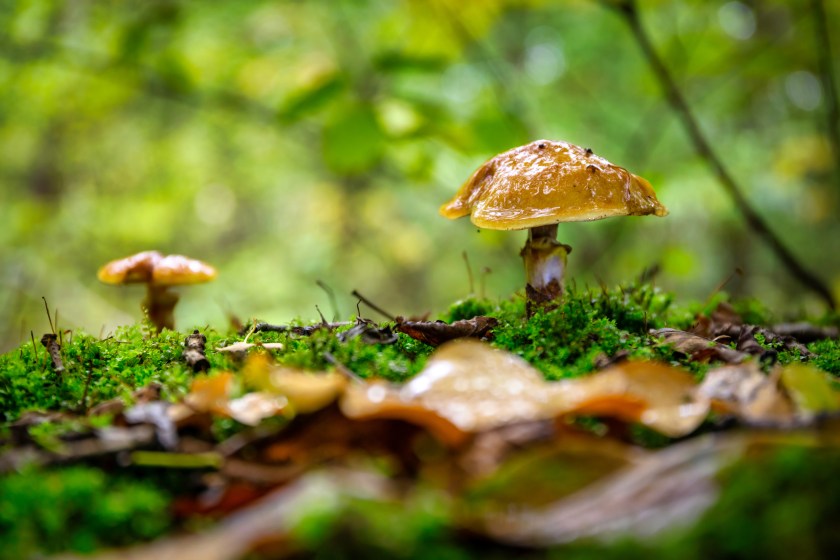
Getty Images, Patryk_Kosmider
The Slippery Jack mushroom is a non-native fungi, but so far it hasn't been troublesome as an invasive species. Slippery Jacks are not only a great edible wild mushroom, but they also look and act like those that we all grew up with at the dinner table like baby bella or cremini mushrooms.
Unlike many of the others on this list, they thrive in coniferous forests and can be found from early summer right through the fall. As the name suggests, it has a slimy feel to it; the skin should be peeled off before using it to cook with and used within a few days of being picked.
READ MORE: FIELD TO TABLE: MUSHROOM AND PROVOLONE STUFFED VENISON BACKSTRAP RECIPE
